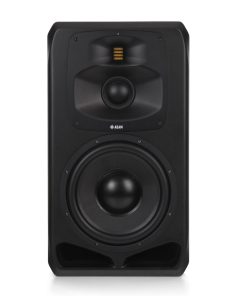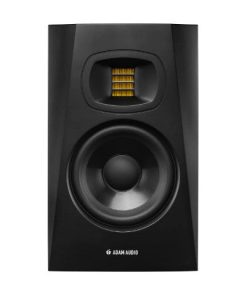Arturia Mini V4 License Arturia
$ 199,00 $ 79,60
The most recognizable monosynth on the planet, reincarnated. Mini V captures the magic of the instrument that put iconic lead and bass sounds into the hands of musicians. Brought to life with next generation modeling, add compelling synth sounds to any track with luscious detail and dynamic drive.
DNA preserved,
sound set alight
Timeless and iconic, the full and famed sound of the Mini continues to leave a mark on music culture.
A potent lead and bass synth actualised with True Analog Emulation®, that recreates the awe-inspiring character of vintage analog circuits. Mini V offers a remarkable musical experience – continuing its legacy and expanding its capabilities.
True sound
Mini V’s precise emulation and sonic accuracy is simply unparalleled. The 3 OSC fatness, the super-rich ladder filter — it’s all there.
Analog feel
You’ll love the attention to detail and authenticity we put into the Mini V interface – stripped back to its core essence, with plenty of ways to tweak your sound just the way you like it.
Versatile sound
Whether punching nostalgic Boards of Canada keys or shredding retro solos, Mini V’s iconic sound is genre-fluid.
Up to date
Adjustable polyphony, versatile effects, and modulation options provide accessible and advanced settings without compromising its inner core.
Don’t just
take our word
Explore the powerful and diverse sounds of Mini V.
A reference for bass and lead synthesis, after its legendary analog ancestor. Mini V’s sound goes above and beyond in terms of detail and drive.
Mini by name,
Massive by nature
From classic prog and funk to mainstream pop, hip-hop and electronica, everyone fell in love with the Minimoog.
The Minimoog put the essentials of wall-filling modular synths into a package everyday musicians could afford, and take to the gig. The rest is history.
While Minimoog was not the first synthesizer, it was definitely the one that got most people’s attention. Robert Moog, whose name is synonymous with synths, had already seen his modular systems succeed and even cross into popular musical culture thanks to musicians like Wendy Carlos and Keith Emerson. Towards the late 1960s, though, demand for a truly portable and user-friendly way to get that soaring sound was building, and sales of the large and expensive modulars were slowing.
Prompt Delivery and Professional Packaging
Our long-standing partnership with UPS FedEx DHL and other global carriers lets us offer a range of shipping services. Our warehouse staff is extremely skilled and will package your items according to our precise and exact specifications. Your goods will undergo an extensive inspection and be safely packaged prior to being sent out. Each day, we ship to thousands of customers in many countries. The fact that we are committed to becoming the biggest online retailer in the World is clear. These warehouses are in Europe in the same way as they are in USA.
Note: Orders that include more than one item are assigned a processing period depending on the item.
Before shipping, we will inspect thoroughly the items you have ordered. Most orders are shipped within 48 hours. Expected delivery time is between 3-7 days.
Returns
Stock is dynamic. It's not entirely managed by us since we are involved with multiple entities, including the factory and the storage. The actual stock can change at any moment. It is possible that your order may be out of stock once the order has been placed.
Our policy lasts for 30 days. We cannot exchange or refund your order if it has been 30 days from the date of purchase.
For your item to be returned it must be in its original packaging, unopened and in the condition you received it. The item must be in its original packaging.
Related products
Microphones
Monitor Systems
500 Series
Recording Equipments
Equalizers
Microphones
Monitor Systems
Recording Equipments
Monitor Systems
Recording Equipments
Subwoofer
500 Series
Monitor
Monitor
Monitor Systems
Microphones
Microphones
Monitor Systems
Headphones
Mic Preamp
Accessories
Accessories
Monitor
Recording Equipments
Monitor
Monitor




























































